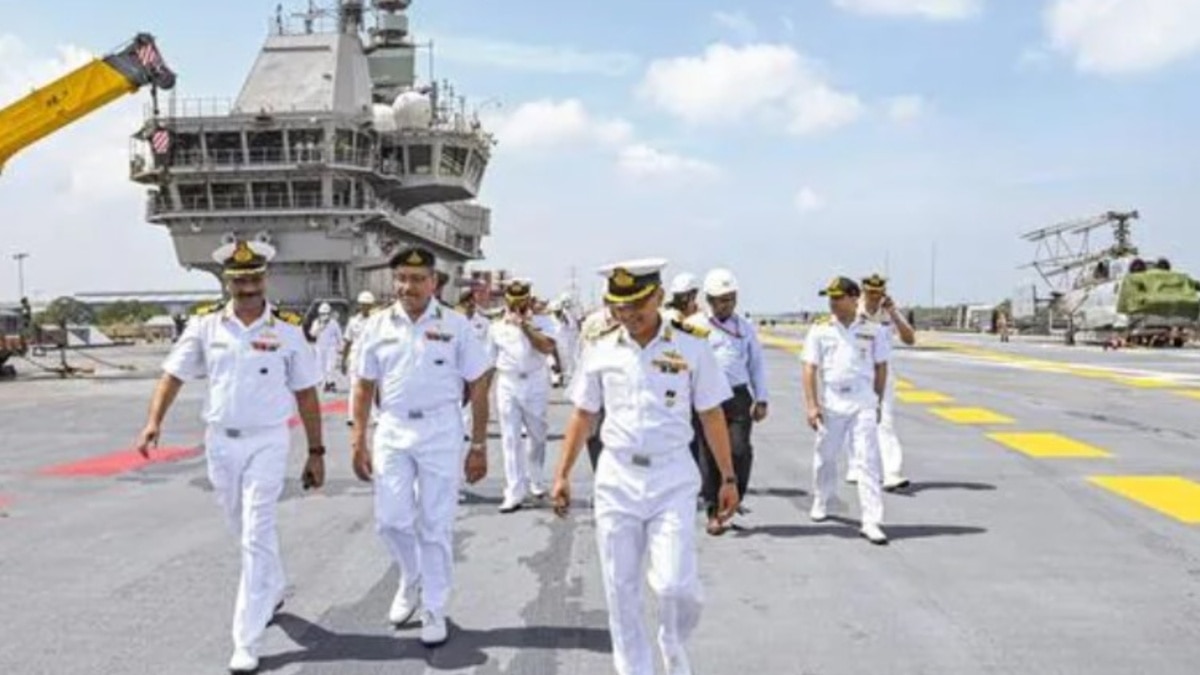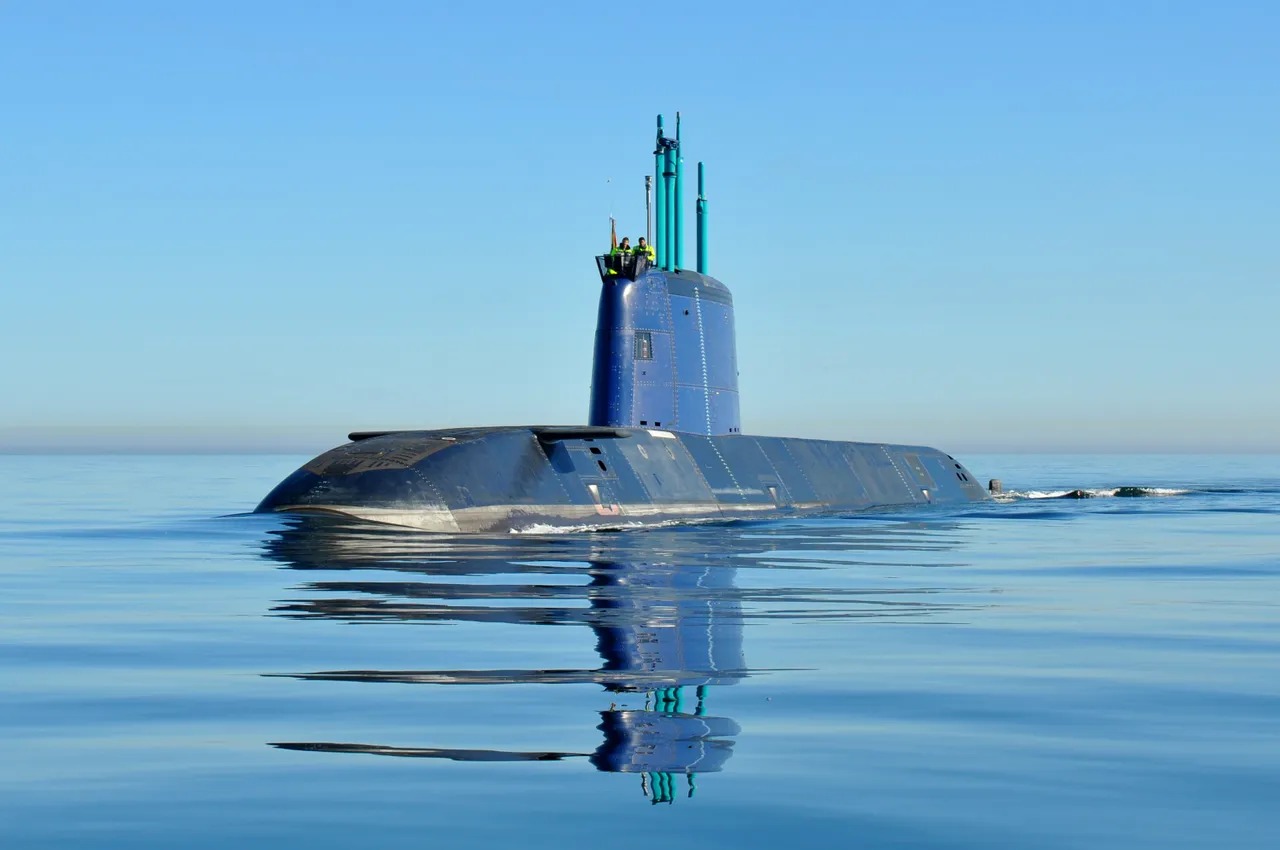Germany Offers ‘Bigger’ 214 Version Of HDW-Class Submarines To Indian Navy To Counter Pakistan, China
Germany’s ThyssenKrupp AG has offered India the bigger 214 version of HDW-class submarines. Conventional diesel submarines are on offer for a $4.8 billion deal for six submarines under Project 75I.
As against the required 24 conventional submarines, the Indian submarine fleet has only 16 submarines, and apart from the six recently-built submarines, the rest are over 30 years old and approaching their decommissioning date.
Considering it took 11 years for the first Scorpene class submarine to enter the Indian Navy’s fleet after signing the deal, the subs to be built under Project 75I are at least a decade away from entering operations.
The Indian government’s thrust on ‘Make in India’ indicates that the Indian Navy will go with the bidder offering the best and largest technology transfer.
While announcing the tender in July, the Ministry of Defence said it expected substantial technology transfer to Indian shipyards apart from providing the submarines with Air-Independent Propulsion (AIP). The AIP technology helps conventional vessels stay underwater for longer.
“The existing 214 is a standard design, which will need some modification to meet the (Indian) Navy’s requirements. It is not unusual. The Type 209s that India got from Germany in the mid-80s and built two of it in India were also modified to Indian specifications,” a ThyssenKrupp official told the EurAsian Times.
The HDW Class 214 submarines are single-hull, one-compartment submarines that fuse the design principles of the HDW Class 209 family and the outstanding features of the HDW Class 212A boats.
The Type 214 is a class of diesel-electric submarines developed exclusively for export by Howaldtswerke-Deutsche Werft GmbH (HDW). As an export design, it lacks some of the classified technologies of the Type 212, such as the non-magnetic steel hull, making it difficult to detect using a magnetic anomaly detector.
Increased diving depths, the modular weapon and sensor mix, and the fully integrated AIP features make the HDW Class 214 essential for augmenting India’s naval strength as the Chinese submarines are making an unprecedented foray into the Indian Ocean Region (IOR).
An AIP enhances a submarine’s underwater endurance between battery charges by three to four times, thus reducing its vulnerability to detection. As the Chinese naval presence increases in the Indian Ocean, submarines with AIP can monitor them much better without getting detected.
The Germans have been pioneers in successfully operationalizing a Fuel cell AIP system on board their submarines, which Israel, Germany, and Turkey are also using. The South Korean AIP system has also been developed from the German one.
The other contender in the fray is Spain’s Navantia. Both companies have joined hands with Indian companies – ThyssenKrupp has collaborated with the Mumbai-based Mazagon Dockyard Limited, and Navantia has partnered with private shipyard Larsen and Toubro.
Navantia would design the submarines based on its
S80 class of submarines, the first of which was launched in 2021 and is undergoing sea trials before its delivery to the Spanish Navy at the end of 2023. The Spanish company is already a proven supplier of India’s growing naval industrial base, having been involved in the Scorpene submarines (
Kalvari-class) built in India, including handholding of the Indian yard.
In September 2023, Navantia
completed the factory acceptance tests of the AIP BEST (Bio-Ethanol Stealth Technology) system for the S-80 submarines in a unique testing facility.
This will allow Navantia to finally verify the performance and operational capabilities of the AIP in a simulated operating environment, i.e., on land but with a high degree of fidelity to the demanding conditions that the system will have to withstand during a real mission.
Only Germany’s ThyssenKrupp Marine Systems and South Korea’s Daewoo Shipbuilding have SSK designs with installed and functioning AIPs in their navies. “ThyssenKrupp claims to have supplied 70 percent of the non-nuclear submarine fleet globally from its shipyards.
Its HDW Fuel Cell Air-independent Propulsion system has achieved a low noise and infrared signature, and the technology is available,” Commander Milind Kulshreshta (Retired) told the EurAsian Times. He is a specialist in warfare tactics, including sub-surface.
AIP-powered conventional diesel-electric submarines (SSK) are midway between nuclear-powered boats and non-AIP SSKs. It allows an SSK to remain submerged for 10 to 14 days without needing to surface to recharge its batteries when it’s vulnerable to detection by enemy anti-submarine warfare boats.
Other SSKs can stay underwater for roughly 48 hours. The fuel-cell-based AIP is unique, as it generates its hydrogen requirement on board.
India Levels Up Underwater Game
China’s submarine force makes even the world powers apprehensive of its sheer numbers. Its submerged force has 76 platforms – comprising 8 SSBNs (ballistic missile submarines), 13 SSNs (nuclear-powered attack submarines), and 55 SSKs (diesel-electric submarines).
Beijing makes no bones about its intentions to dominate the Indo-Pacific and, more specifically, the Indian Ocean Region. India’s submarine capability remains woefully short, with only 16 conventional and one SSBN (INS Arihant). One SSN Akula class submarine on lease from Russia is yet to arrive.
A general naval rule-of-thumb is that for every vessel operating, two more are required – one preparing for deployment and one standing down from recent operations. The numbers are needed to keep up with the maintenance and crew’s rest and training schedule.
During peacetime, only one-third of the fleet is expected to be deployed. More vessels can be deployed in wartime, but it is still prudent to assess the availability realistically. The Chinese Navy is not just forging ahead with the induction of submarines in its fleet but also equipping India’s neighbor Pakistan with state-of-the-art technology.
The coming of AIP technology to the Indian Navy will put its fleet in a better position than Pakistan, with all three of its French Agosta-90B (PNS Khalid, Saad, and Hamza) powered by AIPs.
Pakistan is also expected to receive eight 39 A Yuan-class AIP-powered submarines by the end of 2023 under a US$5 billion deal with China.
German Dilemma
Two years ago, when India opened the tender, the German shipbuilder showed no interest in jointly manufacturing submarines with India.
However, the Russian-Ukraine war made Germany come out of the shadows of World War II and assume a more assertive role in leading the defenses against Russia and, hitherto, China, which adopted a more hostile attitude in the Indo-Pacific region.
The West is waking up to the fact that a strong India is their best bet against a belligerent China in the Indo-Pacific. The ThyssenKrupp will, jointly with MDL, bid for the US$5.2 billion project for the Indian Navy.
India purchased four Type 1500 conventional submarines from West Germany’s HDW in 1981 to acquire submarine-building know-how. But, the Submarine Design Group of the Indian Navy could not absorb the capability to design or develop a submarine.
The HDW submarines were accompanied by a detailed plan to build the fifth and sixth submarines indigenously. The project fizzled out as the company got blacklisted in India in 1987 on suspicion of bribery charges.
For a long time, India has been trying to get this critical technology from Germany, France, and Russia. In 2005, India inked a deal with the Franco-Spanish consortium Armaris to build six Scorpene conventional submarines.
The fifth Scorpene class submarine was commissioned in the Indian Navy in January 2023. The subs are also without AIPs, and plans are afoot to retrofit the vessels with the technology. The Scorpene Class will be retrofitted with the indigenously developed AIP in the advanced testing stages.
Germany’s ThyssenKrupp AG has offered India the bigger 214 version of HDW-class submarines. Conventional diesel submarines are on offer for a $4.8 billion deal for six submarines under Project 75I. As against the required 24 conventional submarines, the Indian submarine fleet has only 16...

www.eurasiantimes.com
.


 foronaval.com
foronaval.com

foronaval.com


 www.eurasiantimes.com
www.eurasiantimes.com
